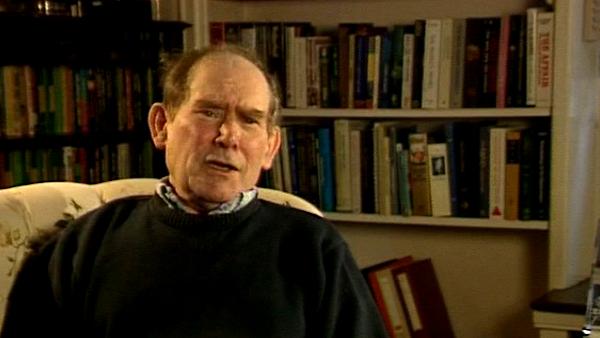So if you believe that… and with our work on… on bacteriophage, because of course we started to look at the head protein, and started to look for mutations controlling this, but this business of this prodigious synthesis was something that we knew had to be explained. Furthermore, it was known that after phage infection no bacterial proteins were made and so the phage then captured the bacteria for its own purposes. If you believe that the ribosomal RNA carried the information from gene to protein you would have to explain the rate by… by there being new ribosomes being made after phage infection. Since this occupied 70% of the protein synthesis for one protein, then at least an equal number of new phage ribosomes should have to be made. The difficulty was that after phage infection no new ribosomes are made, there's no RNA synthesis, and so what you had is if you wished to hold the old theory you had to have what I called at that time the paradox of the prodigious rate of protein synthesis. That is, you had to say, 'Well there could be a few new ribosomes made, they would have escaped your attention, but clearly these very few were capable of prodigious rates of function'. Well, people… other people were working on this question of RNA… of information transfer at the time and some years before two workers called Volkin and Astrachan had discovered a small fraction of RNA synthesis made after phage infection which had what is called the apparent base composition resembling that of the DNA. Now, the apparent base composition is done because when one hydrolyses RNA for its analysis you transfer the phosphate group from the group into… by which it entered the DNA into the adjacent neighbour. Therefore the apparent base composition would be the same as the real base composition if what we called the Digram Structure were random, that is any nucleotide could follow any other nucleotide on the average at… at the abundance they were in the… in the messenger. Volkin and Astrachan actually thought that this was an intermediate in DNA synthesis and the mystery of Volkin-Astrachan DNA lingered on there and of course you couldn't be too sure that there were a small fraction of cells that were doing this, that had escaped the block of phage synthesis.






